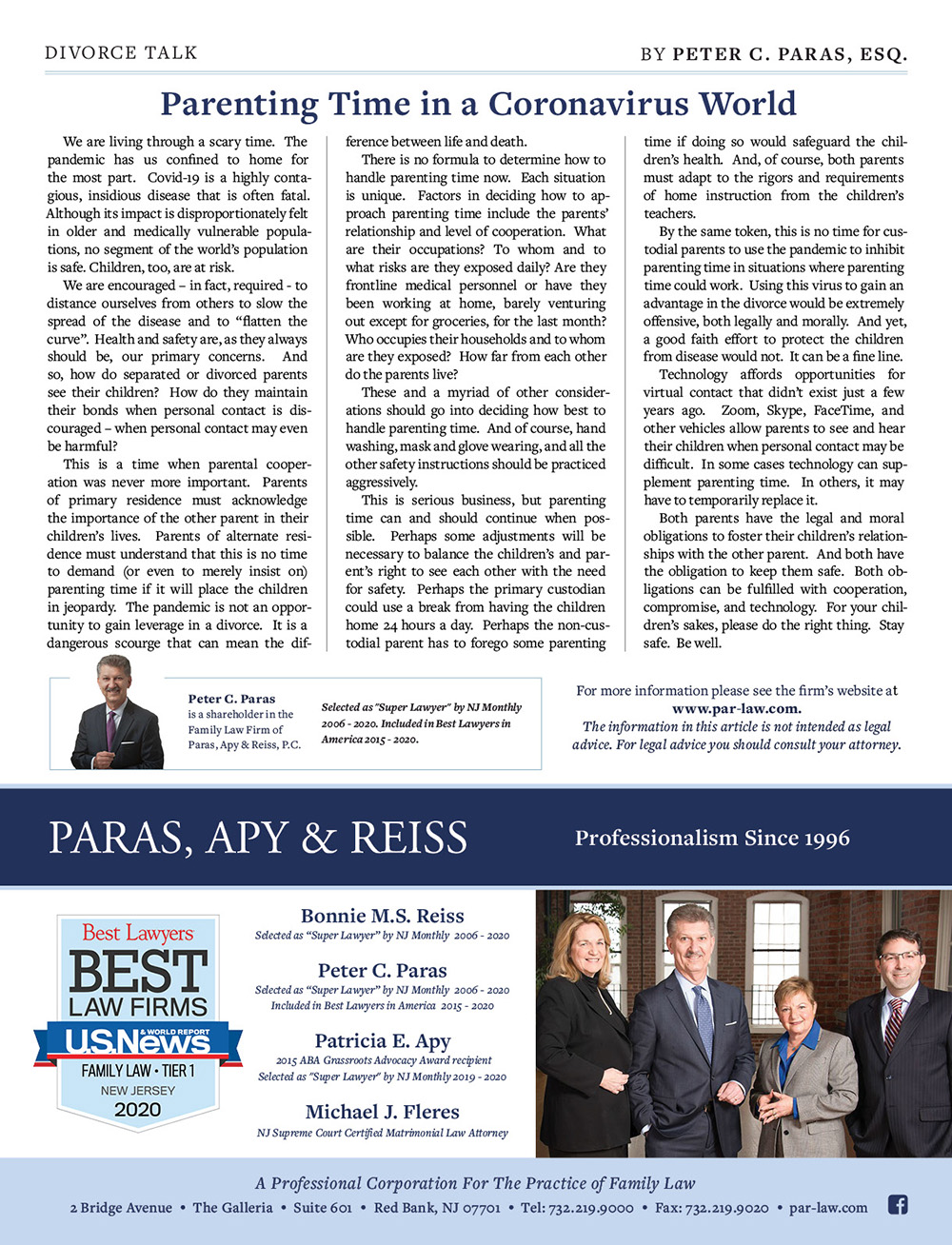We are living through a scary time. The pandemic has us confined to home for the most part. Covid-19 is a highly contagious, insidious disease that is often fatal. Although its impact is disproportionately felt in older and medically vulnerable populations, no segment of the world’s population is safe. Children, too, are at risk.
We are encouraged – in fact, required – to distance ourselves from others to slow the spread of the disease and to “flatten the curve”. Health and safety are, as they always should be, our primary concerns. And so, how do separated or divorced parents see their children? How do they maintain their bonds when personal contact is discouraged – when personal contact may even be harmful?
This is a time when parental cooperation was never more important. Parents of primary residence must acknowledge the importance of the other parent in their children’s lives. Parents of alternate residence must understand that this is no time to demand (or even to merely insist on) parenting time if it will place the children in jeopardy. The pandemic is not an opportunity to gain leverage in a divorce. It is a dangerous scourge that can mean the difference between life and death.
There is no formula to determine how to handle parenting time now. Each situation is unique. Factors in deciding how to approach parenting time include the parents’ relationship and level of cooperation. What are their occupations? To whom and to what risks are they exposed daily? Are they frontline medical personnel or have they been working at home, barely venturing out except for groceries, for the last month? Who occupies their households and to whom are
they exposed? How far from each other do the parents live?
These and a myriad of other considerations should go into deciding how best to handle parenting time. And of course, hand washing, mask and glove wearing, and all the other safety instructions should be practiced aggressively.
This is serious business, but parenting time can and should continue when possible. Perhaps some adjustments will be necessary to balance the children’s and parent’s right to see each other with the need for safety. Perhaps the primary custodian could use a break from having the children home 24 hours a day. Perhaps the non-custodial parent has to forego some parenting time if doing so would safeguard the children’s health. And, of course, both parents must adapt to the rigors and requirements of home instruction from the children’s teachers.
By the same token, this is no time for custodial parents to use the pandemic to inhibit parenting time in situations where parenting time could work. Using this virus to gain an advantage in the divorce would be extremely offensive, both legally and morally. And yet, a good faith effort to protect the children from disease would not. It can be a fine line.
Technology affords opportunities for virtual contact that didn’t exist just a few years ago. Zoom, Skype, FaceTime, and other vehicles allow parents to see and hear their children when personal contact may be difficult. In some cases technology can supplement parenting time. In others, it may have to temporarily replace it.
Both parents have the legal and moral obligations to foster their children’s relationships with the other parent. And both have the obligation to keep them safe. Both obligations can be fulfilled with cooperation, compromise, and technology. For your children’s sakes, please do the right thing. Stay safe. Be well.
Peter C. Paras is a shareholder in the Family Law Firm of Paras, Apy & Reiss, P.C. For more information please see the firm’s website at www.par-law.com.
The information in this article is not intended as legal advice. For legal advice you should consult your attorney.

